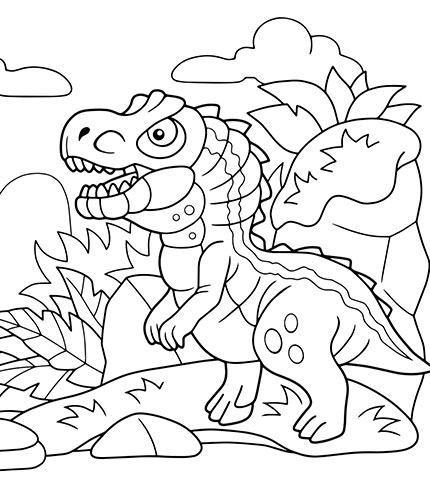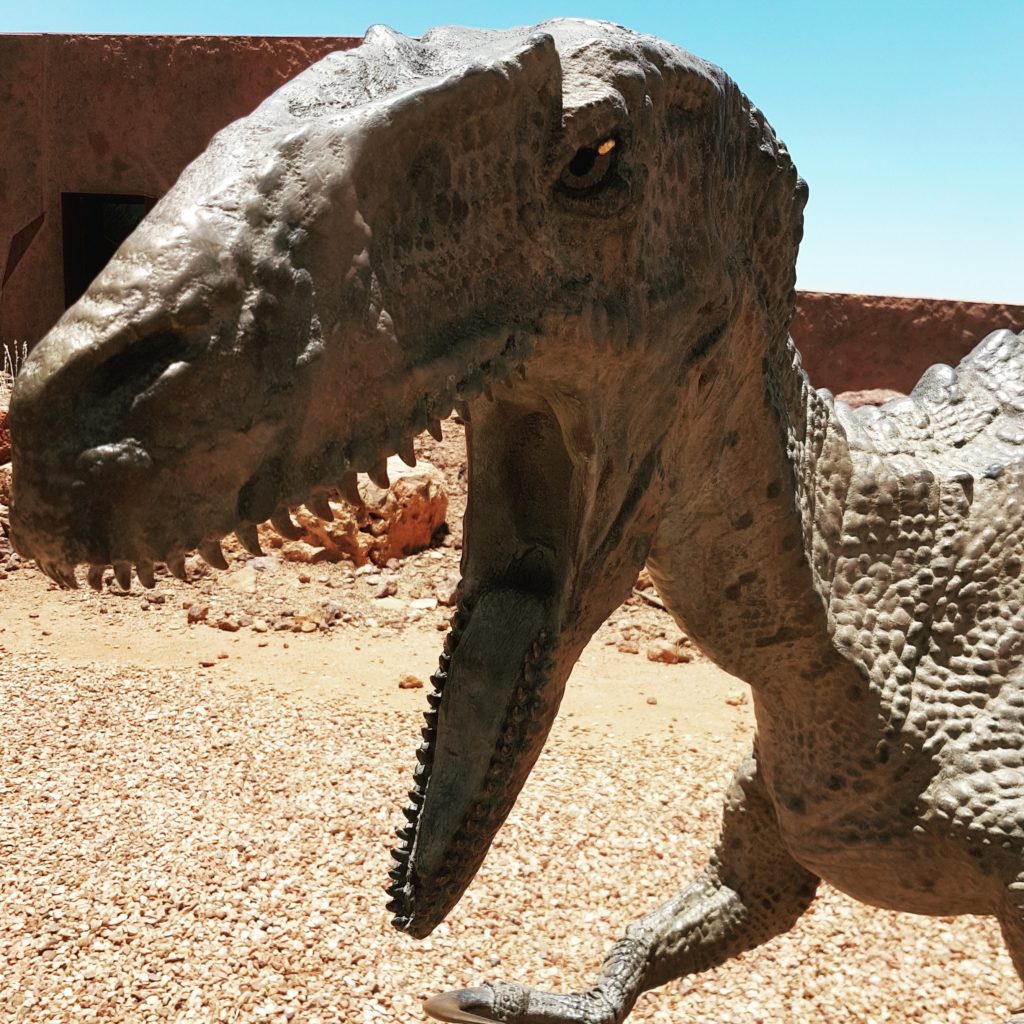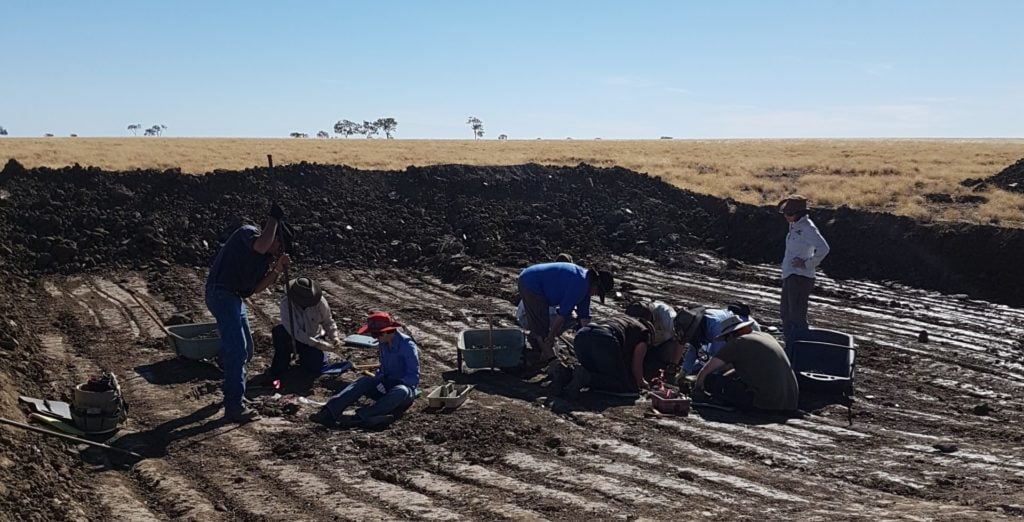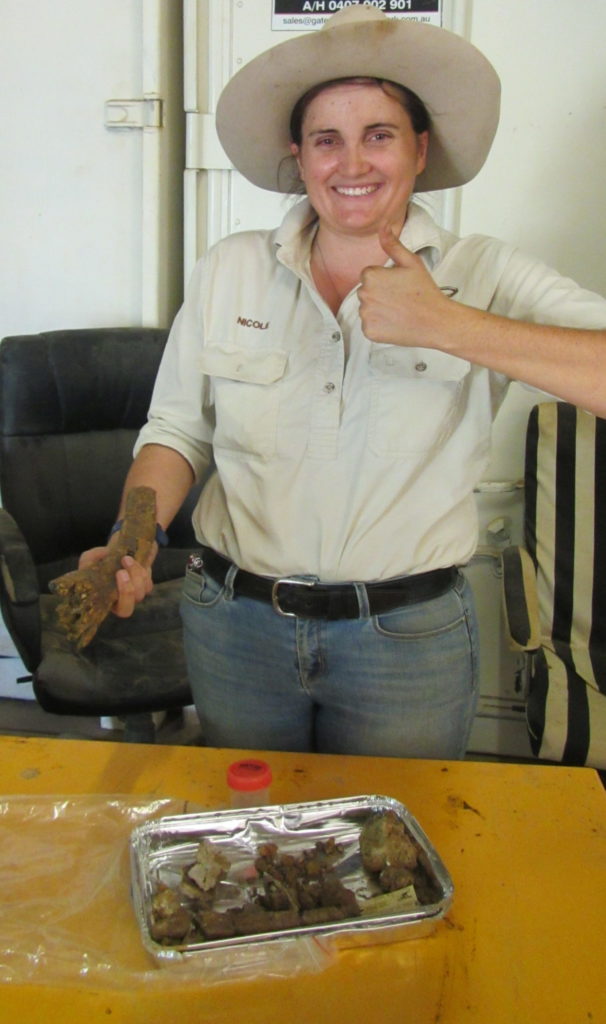By Beth S. Pollak / All Photos Courtesy Nicole O’Donnell and the National Dinosaur Museum in Canberra, Australia
Have you ever wondered what it might be like to work as on a fossil dig? For #CampCaribu’s Dinosaur Day, we spoke to dino experts around the world to learn more about life in the field! The more scientists know about what’s below the Earth’s surface, the more we can solve current mysteries about nature and wildlife.



The Caribu app is a great way to introduce kids to learning about dinosaurs. Download the app, and schedule a Caribu video-call with your family members to read about these famous prehistoric creatures. Discuss what makes dinos different from animals today! Choose your favorite dino, and describe what you like about it. Try our dinosaur coloring pages, and draw together in a virtual playdate!
To learn more about what it’s actually like to work on a dinosaur dig, we spoke to Nicole O’Donnell, Behavioral Ecologist and Tour Guide at the National Dinosaur Museum in Canberra, Australia. She works with families, visitors, and students to teach them about dino life and fossil hunting in the Australian Outback.
National Dinosaur Museum, Canberra, Australia
Nicole O’Donnell, Behavioral Ecologist, Tour Guide
1) What types of prehistoric fossils are unique to Australia?

We have lots of long-necked dinosaurs, similar to the ones you’d find in South America, from the Titanosaur family of long-necked dinosaurs. All of their necks are horizontal, in comparison to dinosaurs like Brachiosaurus, which have necks that go up.
We have fossils from 95 million years ago, when two dinosaurs got into a fight and they both died in the same pit. One was a Diamantinasaurus, which is about 3 meters tall (almost 10 feet), and 15 meters long (49 feet) from head to tail. It has really cool armored things on its back! It stood up for itself in its final moments.
A meat eater, Australovenator, was found with it. It’s a two-meter-long theropod (in the same group as T. rex). It’s 1.5 meters tall (about 6.5 feet), not including its head. It has three large claws on its hand, the largest of which is 20 cm long (almost 8 inches), which it uses to kill prey.
We also have Pliosaur, which are long-necked reptiles like the Loch Ness monster in Scotland. One of them is called a Kronosaurus, which is a huge marine reptile, 15 meters (almost 50 feet) head to tail.
2) What’s important to know about Australian paleontology?

In Australia, we haven’t been digging for as long as everyone else. We only started in the 1960s, and so far we’ve discovered about 24 species. Most of the fossils are found by farmers in the outback areas of Queensland, New South Wales, Victoria, Western Australia, and Southern Australia.
The fossils we find are on properties that have dried mud on the surface. Some bones sit on the surface, and then you dig down, and find the rest of it below that. The blacksoil in Queensland and New South Wales is self-mulching, so it moves up and down over time as it rains.

3) What do you like about going on digs?
There’s lots of sorting and cleaning. It’s not always fun, but you feel so happy when you put two pieces together. I love the puzzling out in the field. You find yourself sitting there in your paleontology outfit, Akubra [hat] on your head, saying: “I can do this!”
5) Are there any living dinosaur descendents in Australia?
Of course! They are still alive today. We just don’t call them dinosaurs— they’re birds! They lay eggs; they have scales; and their legs go straight down below the hips. All birds are dinosaurs, they’re just not called dinosaurs. They survived the extinction. The smaller creatures survived because they didn’t need a lot of food and they could hide under things. Even Tyrannosaurus Rex is an ancient bird, and had feathers down its spine.
6) What can kids do if they want to pursue dinosaur and animal studies from home?

Paleontology starts at home. Kids can go into their backyard and start collecting small fossils, little bones and insects. Dead spiders. Or shells that used to contain beautiful organisms. When you start collecting, a small collection as a kid grows into a dinosaur collection as an adult.
The digging equipment we use is what you have in your garage: brushes, buckets and spades. In Australia, you can go on a dig as a volunteer at 18 years old. You can volunteer in a fossil prepping lab from age 12.
Most museums at the moment, including ours, are moving online because of COVID-19. Take a look at the digital collections. Use the resources so you can become an archaeologist, geologist, or paleontologist.
Many museums also have Citizen Science programs. For example, you can do activities like counting the number of birds in the sky to help your local museums. Connect with the museums to find out more.
Read more about dinosaurs in the Caribu app! Download the app today so you can connect with your loved ones and share some more animal adventures. Learn, play, and color together in your next virtual playdate.
Beth S. Pollak is a writer and educator based in California. In addition to working with Caribu, she consults with educational organizations and EdTech companies. Beth has worked as a teacher and journalist in Chicago, New York, and San Francisco. She holds degrees in journalism, bilingual education, and educational leadership. In her free time, she enjoys hiking, biking, picnics, and dance.


